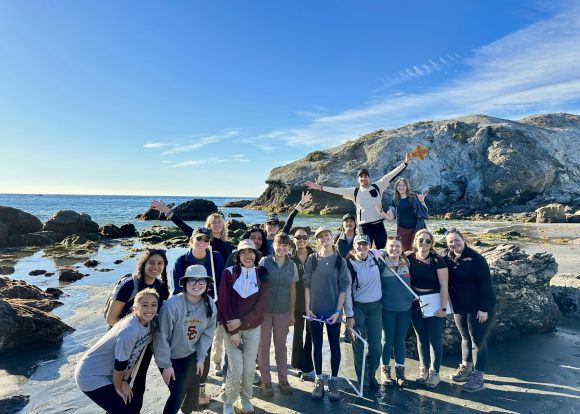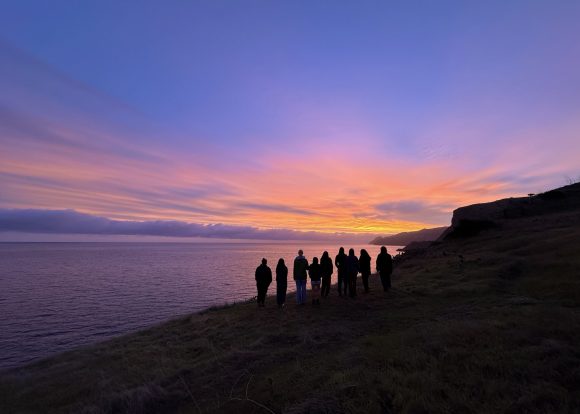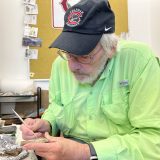Schmidsters Study Conservation and Environmental Stewardship on Catalina Island
February 1, 2024
“Each day, I had the opportunity to witness the breathtaking sunset over the mainland, accompanied by the captivating sight of thousands of dolphins swimming in the foreground,” said Megan LaBelle ’26, an Environmental Science and Policy major. “Exploring the island, I could snorkel and hike at my own leisure, allowing me to immerse myself fully in the surrounding nature.”
LaBelle was one of 17 students who spent her Interterm 30 miles out at sea — on Santa Catalina Island, that is, off the coast of Long Beach. She was participating in a new lecture-and-lab ecology elective, “Diverse Perspectives in Conservation Biology,” taught by Assistant Professor of Environmental Science & Policy Richelle Tanner.
It wasn’t all sunsets and dolphins. Coursework consisted of a series of rigorous projects focusing on marine, nearshore, and terrestrial ecosystems. Students were expected to go from collecting data in the field and processing in the lab to analyzing data and writing a report in just a matter of days.
Field exercises throughout the course included transects, soil coring, quadrat measurements for community composition, and time lapse sampling using oceanographic equipment such as Niskin bottles and plankton tows. Lab exercises included soil nitrogen quantification, plankton and insect identification, and soil texture determination. Students also completed independent nature journals, which involved over a dozen sessions of sitting in nature and observing relationships.
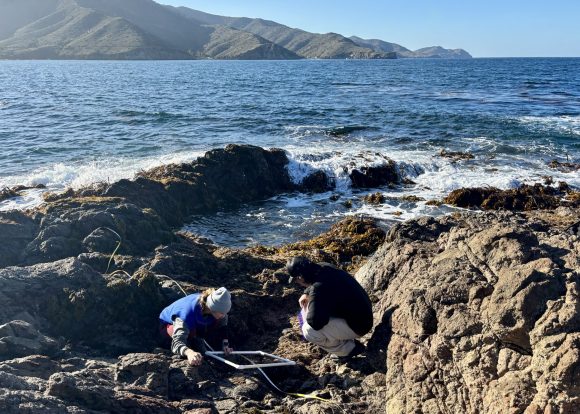
“Place-based courses and research experiences are a really important component of an education that helps students to become responsible, ethical, and community-committed scientists,” said Tanner.
For Micah Kim ’26, an Economics and Environmental Science & Policy double major, her favorite project was a snorkel lab, in which students used transect lines and counted fish. “We snorkeled in both sandy areas and kelp areas and counted the amount of fish we saw within a few meters from us,” said Kim. “It was freezing cold, but the provided wetsuits kept us warm. After we finished the activity, we were able to have fun and jump off the dock a few times!”
Abigail Harsche ’26, an Environmental Science & Policy major and Broadcast Journalism minor, agreed. “I loved identifying each of the different fish that we saw,” she said. “And it was so interesting to do the analysis of the data post-collection and see which type of substrates were more likely to have greater populations of fish.”

Between classwork, the group explored the island by kayaking, snorkeling, and participating in other research activity happening there, including the launch of a weather balloon with University of California, San Diego.
“Living on Catalina was such a specific, amazing experience,” said Harsche. “We were completely secluded at the Wrigley campus, but it did not feel that way because we had all our classmates and the employees. It was such a fun sort of ‘bubble’ where we could all just spend time together, get our work done together, and do fun hikes and snorkeling too.”
During her own undergraduate education, Tanner spent time on Catalina Island with the USC Wrigley Institute. “It’s where I learned a lot of hands-on research techniques, but it was also a place where I first connected with the people who were directly impacted by the science I was doing,” said Tanner.
Tanner described the the island as “a setting where stakeholders and science are uniquely intertwined.”
“Students learned why it is important to design research that prioritizes community input,” she said. “Catalina Island also has a rich indigenous history of stewardship juxtaposed with its current occupation and tourism focus, which posed a lot of opportunities for critical thinking about the current and potential roles of indigenous and Western science in land and natural resource management.”
“I learned that environmental management and stewardship can be approached in so many manners, which account for communities’ cultures and lived experiences,” said Citlalli Madrigal ’24, an Environmental Science & Policy major. “There is no uniform way of approaching environmental relationships and I will be keeping this perspective in mind as I continue learning and caring for the environment.”
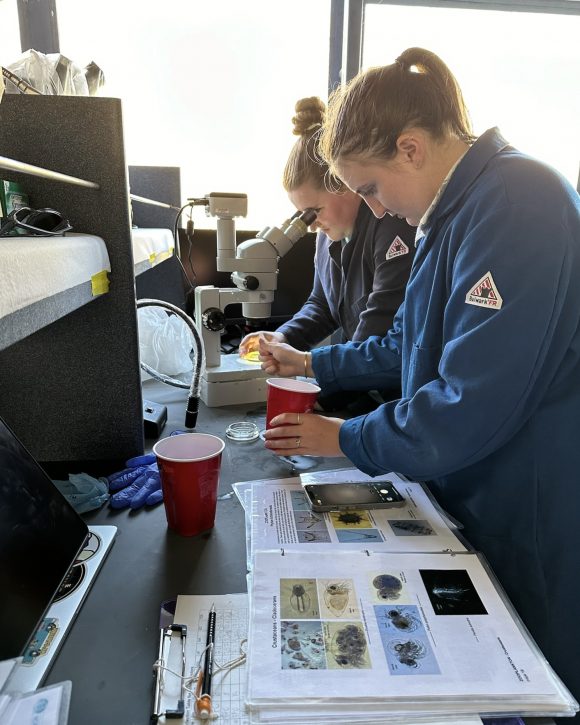
“Engaging in various field labs covering a broad spectrum of concepts has bolstered my confidence for entering the workforce,” said LaBelle. “Moreover, connecting with fellow Schmid students was truly enriching. I forged meaningful bonds with everyone on the trip.”
“Living on Catalina Island was a truly incredible experience,” she continued. “Catalina stands out as one of the best places to connect with nature, offering an abundance of natural beauty and mystery.”
“This is an invaluable experience that is the defining point for many students where they decide that this is a career that exists and that they belong in. It was for me,” said Tanner. “The nature of a field course in such an intense time period also means they get a much deeper understanding of how and why techniques in the lab and field are applied, and can retain a lot more of this information past college. Some of the things we did — I still remember doing when I was their age, a decade ago.”
